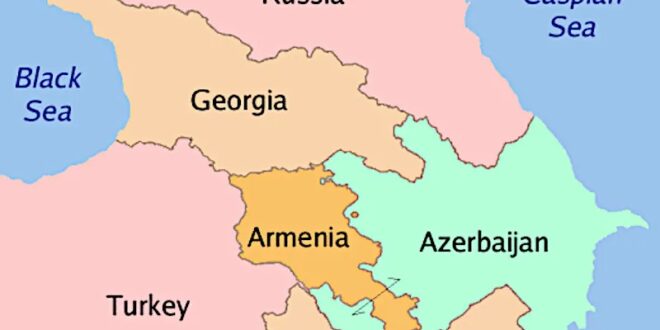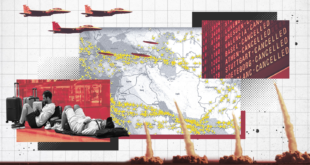Since the early 1990s, Armenia and Azerbaijan, two countries in the South Caucasus, have been in conflict. Sometimes this conflict has been “frozen,” while at others it has been “hot” — for example, during the Second Nagorno-Karabakh War in 2020 when 44 days of intense fighting left thousands dead on both sides. The source of their dispute is the status of the ethnically Armenian Karabakh region, which the international community considers to be part of Azerbaijan.
After intense fighting in the region in the early 1990s, Armenia ended up occupying a sizable area of Azerbaijan, including the Karabakh region, for almost three decades. However, after the Second Nagorno-Karabakh War ended, Azerbaijan was able to regain most of its territory. The resulting ceasefire agreement left a small section of Karabakh out of the hands of Baku and under the supervision of a Russian peacekeeping force. Since the war ended, there have been no major clashes between the two countries, only small and localized skirmishes.
In recent weeks, the EU and US have renewed efforts to bring about a lasting peace between the two countries. There was cause for optimism that an enduring peace deal was possible for the first time in decades. However, hopes began to fade away earlier this week.
A few days ago, Azerbaijani environmental activists staged a protest blocking the Lachin corridor over what they consider to be illegal mining and environmental damage by Armenia inside the Karabakh region under the control of Russian peacekeepers. The corridor is the only road connecting the Russian-controlled region of Karabakh to Armenia. Everything that is transported to Russian-controlled Karabakh has to travel along this route.
Armenian authorities blamed the protesters for blocking essential items, such as food, energy and medical supplies, being transported from Armenia to the section of Karabakh under Russian control. Azerbaijani authorities deny any responsibility in organizing the protests. Protesters reject the claims that essential goods and medical supplies have been blocked. With no international media on the scene, it is difficult to know exactly what has been happening.
This incident should serve as a wake-up call for the international community. It is clear that the Russian peacekeeping force is unable or unwilling to enforce the terms of the November 2020 ceasefire agreement that brought an end to the Second Nagorno-Karabakh War. The fact that essential services, supplies and energy can apparently be choked by a small number of civilian protesters blocking a single road should also concern ethnic Armenians living in Karabakh. It would suggest that the only future for ethnic Armenians living in Karabakh involves coming to peaceful terms with Baku and integrating into Azerbaijani society.
However, the transit disruption caused by protesters along the Lachin corridor can also create problems for the Azerbaijani government. Baku has been clear that it sees ethnic Armenians living in Karabakh as being Azerbaijani citizens who should be treated equally as such. Therefore, the Azerbaijani government cannot be seen to condone any activity that would block the delivery of essential items, energy and medical supplies to the ethnic Armenian population.
While the intentions of the Azerbaijani protesters were to send a signal to the outside world about what is happening in the Karabakh regions under Russian peacekeeping control, these protests also run the risk of going too far and tarnishing Azerbaijan’s case in front of the international community.
At face value, Azerbaijanis see a certain amount of hypocrisy over Armenians complaining about protesters temporarily blocking the Lachin corridor. After all, the Armenian occupation of the region until 2020 created hundreds of thousands of internally displaced Azerbaijanis who were unable to return home for almost three decades.
It is to be hoped cooler heads will prevail, and Azerbaijan and Armenia will return to the negotiating table. Azerbaijan and Armenia, and the South Caucasus region in general, would benefit greatly from a lasting peace over Karabakh. Armenia needs to come to terms with the fact that a peaceful coexistence with Azerbaijan is the only way forward. Additionally, Azerbaijan needs to make a greater effort to demonstrate to Armenia that it is serious about a lasting peace.
Recent events along the Lachin corridor have dampened the prospects for peace and served as a reminder of how volatile and fragile the security situation is between Armenia and Azerbaijan. It is also a reminder that the once supreme Russian influence in the region is waning. Many countries on Russia’s borders are now questioning Moscow’s power and influence, and are willing to test the Kremlin more than ever before.
While Moscow will have a part to play in any lasting peace deal between Armenia and Azerbaijan, it will no longer play a major role. The international community needs to take on more responsibility and show more leadership. Most importantly, it needs to act fast before the situation spirals out of control.
 Eurasia Press & News
Eurasia Press & News



